UBUNTU is Bantu word for the common benefit, meaning “I am because we are”. Current environmental analysis has been carried out on the basis of the Studio project. As a team, we have analyzed the initial site conditions, the impact of the local climate on our design and then the ways to optimize the design solutions in order to improve the user experience.
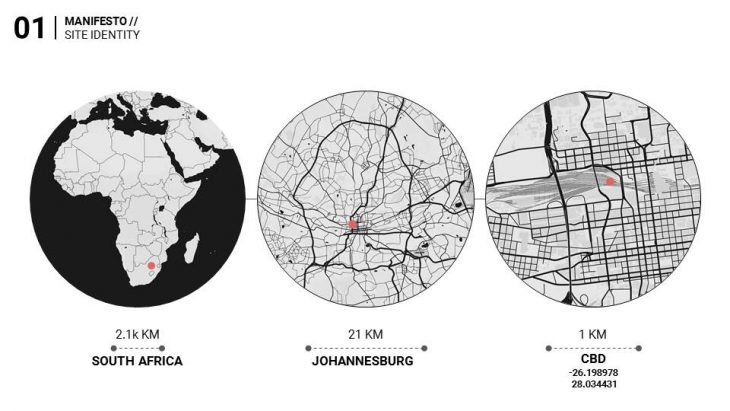
The site we’ve chosen is located in Johannesburg, South Africa. As the charts below show, the area has good climate and the only real issue to address is the direct sunlight: South Africa is one of the sunniest regions on the planet, so the protection from the solar radiation is one of the key climatic comfort problems faced by the architects.
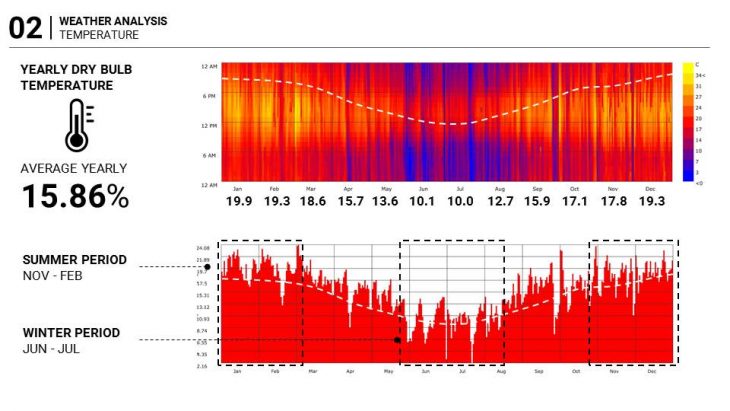
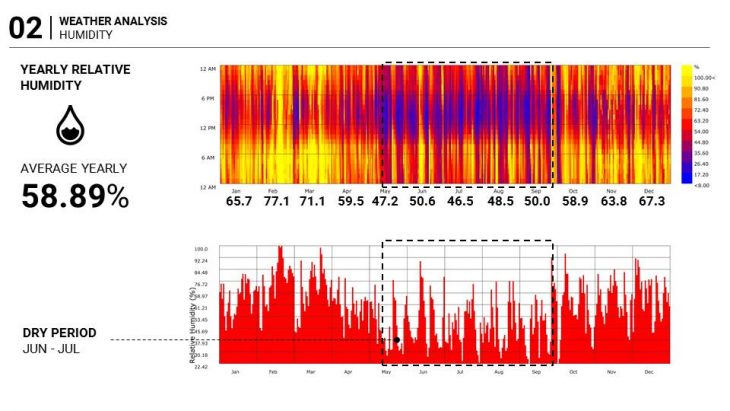
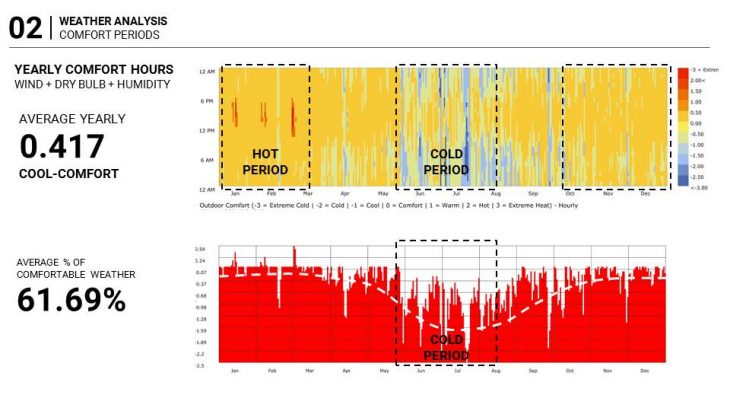
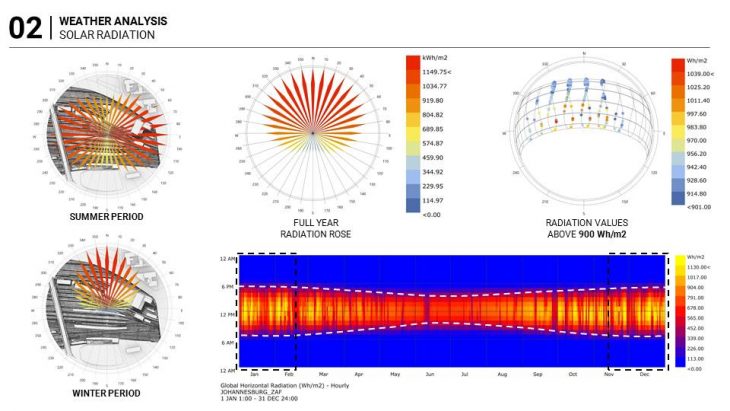
The problem is compounded by the fact that our design site is, basically, just the field of rails and the object we have designed is an open-air public space located on the bridge across the railroad, over 500 meters long.
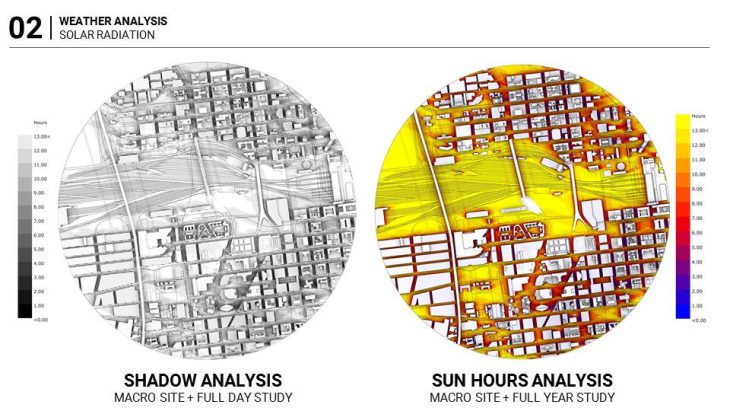

Wind was an issue as the source of the lateral load for the bridge but, luckily for us, the original position of our structure was favorable from this standpoint: the wind rose shows that the dominant wind direction on the site is North-South, and so was our bridge oriented. Therefore, the optimization which we have undertaken has been informed by the wind study only in some detail (which we will show below).
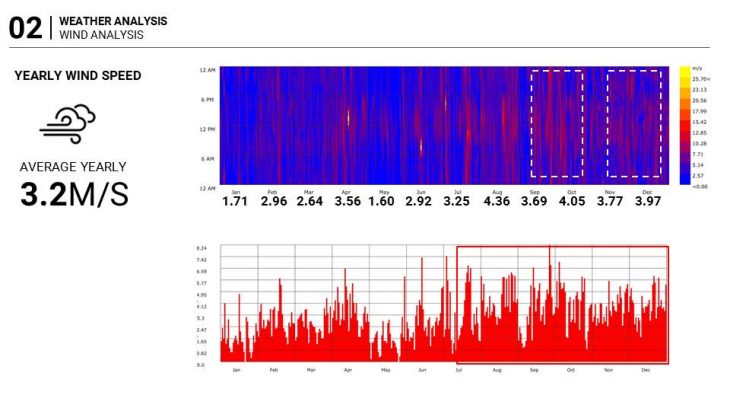
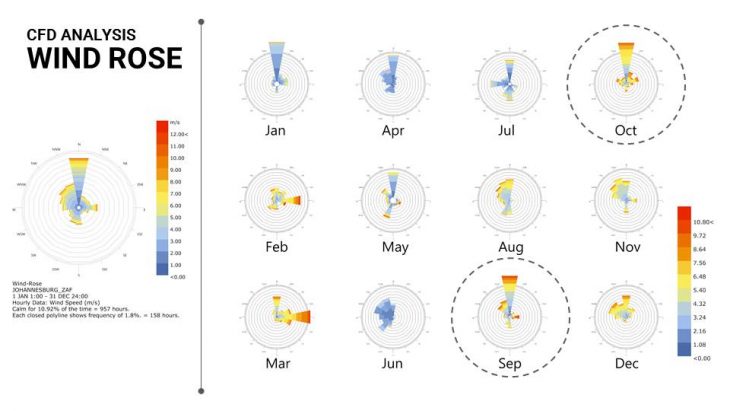
The key driver for the optimization was not really environment-related. We had a limited number of areas where we could locate the supports for the bridge and we had to balance between them, the minimal travelling distance and the optimal slope which had to be wheelchair-friendly.

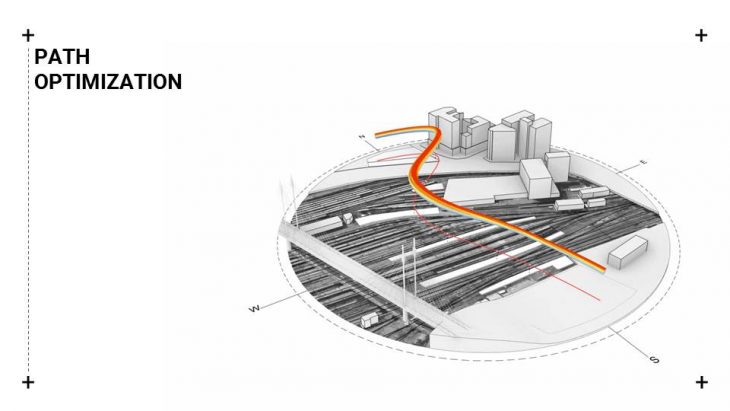
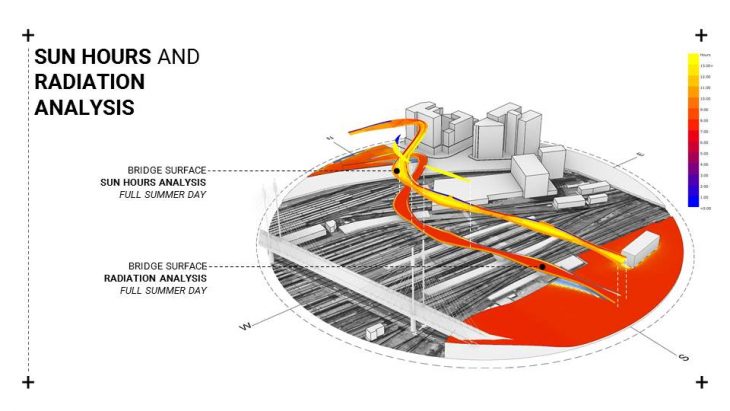
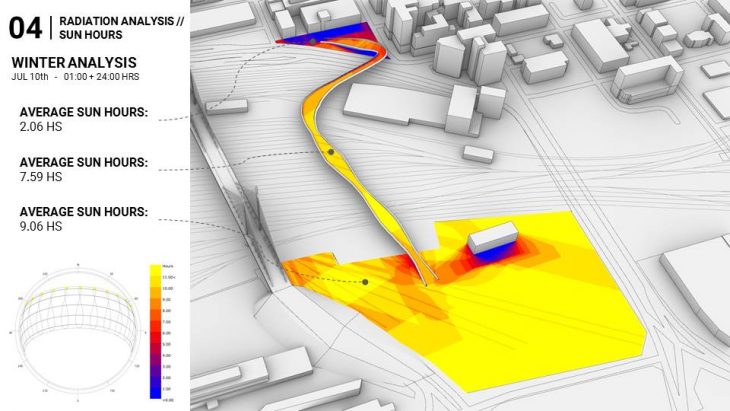
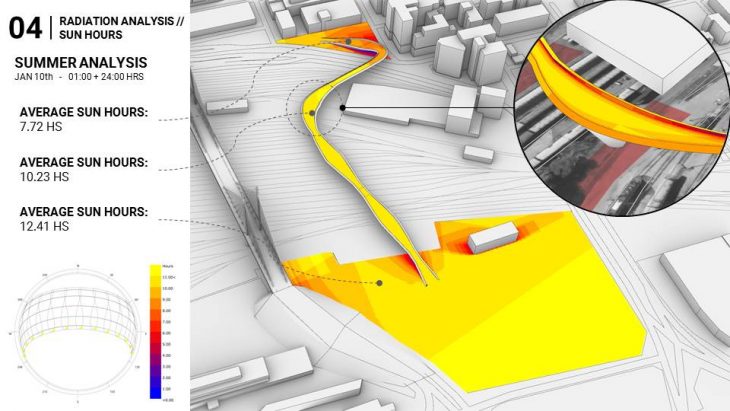
Then we had to address the solar radiation issue and that is when we introduced the protective skin to the design. It had to be light and it could be used on a limited number of surfaces but still, the comparative analysis immediately shows the improvement in the thermal comfort. The skin is created of thin panels (or, possibly, even fabric) which are located at an angle, shading off the direct sunlight and leaving openings for the ventilation and views. The skin has been developed, mostly, from the North-Western side, where from the most aggressive sunlight comes in the Southern hemisphere.
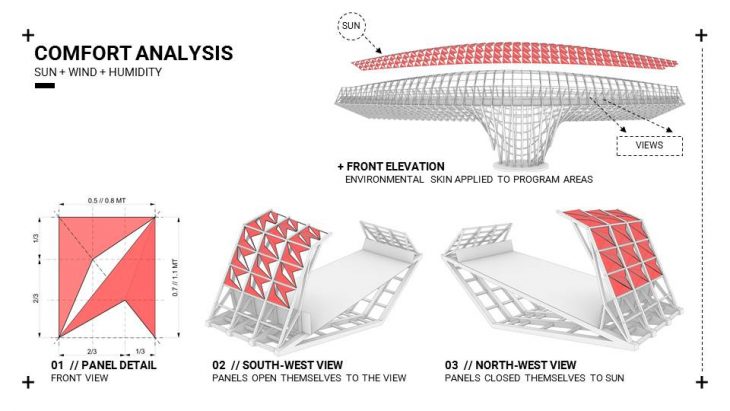
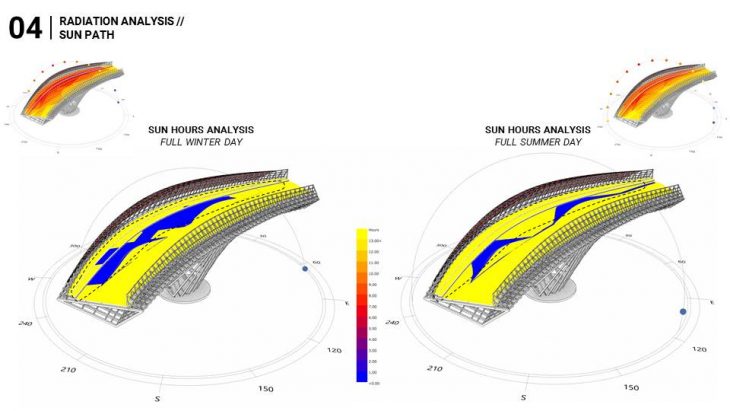
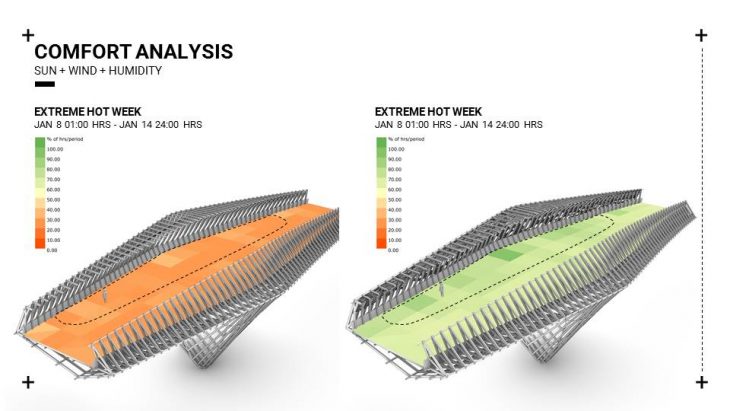
Having addressed the sun-protection issue (only partly, because our object had to remain an open-air structure and we couldn’t be increasing the weight, either) we have started the fine-tuning by improving the outdoor comfort in the urban areas adjacent to the bridge’s ends. We have run the CFD study for the Northern site and it has informed the form of the connection to the ground and the layout of the small plaza next to it.
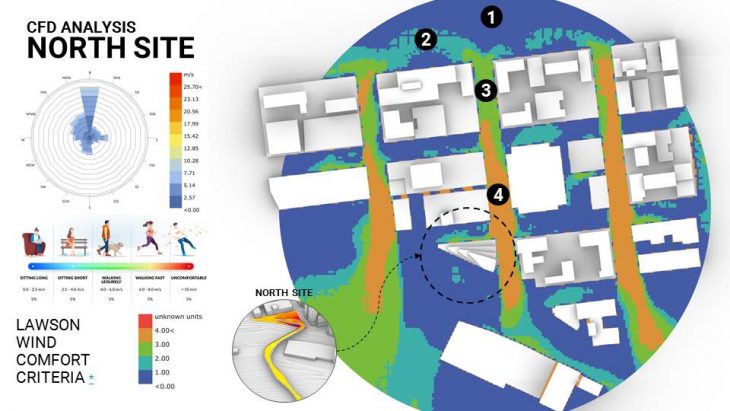
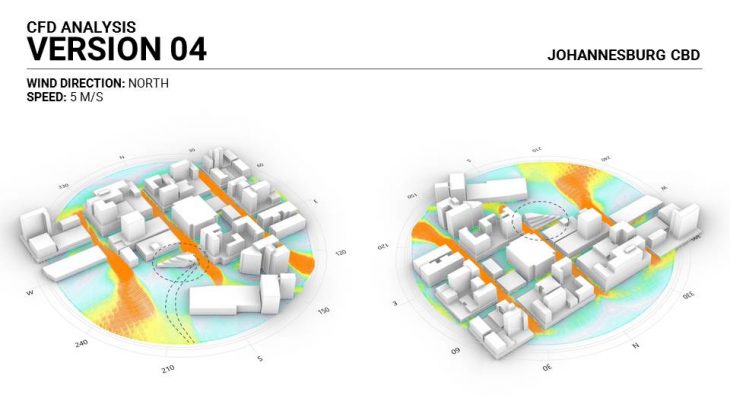
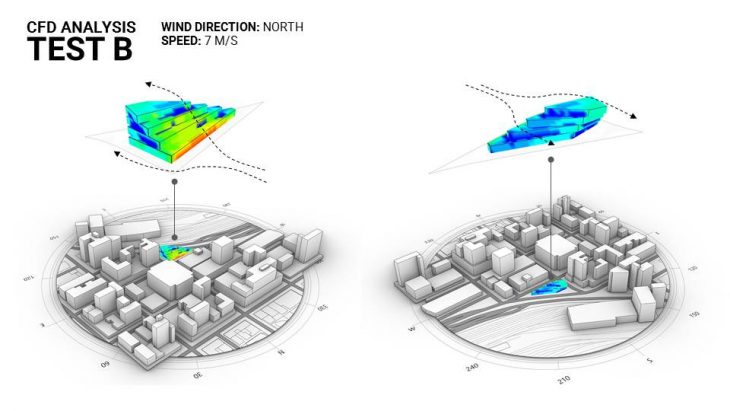
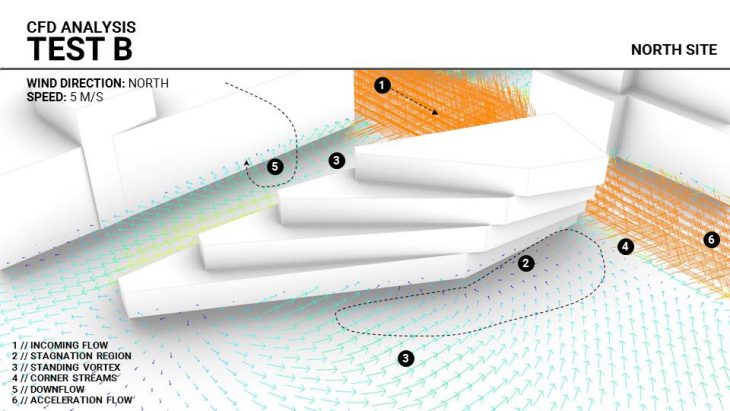
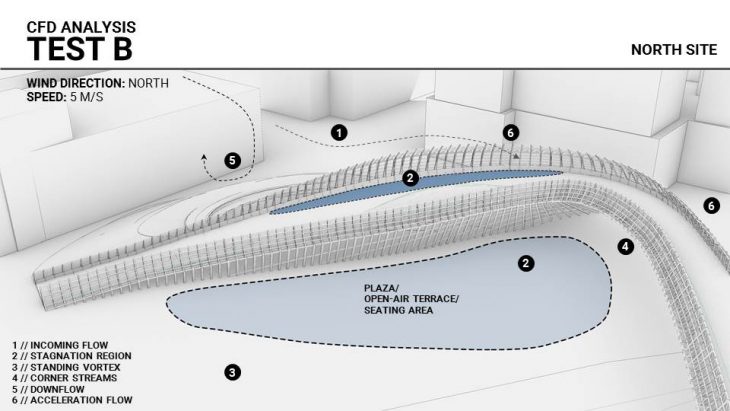
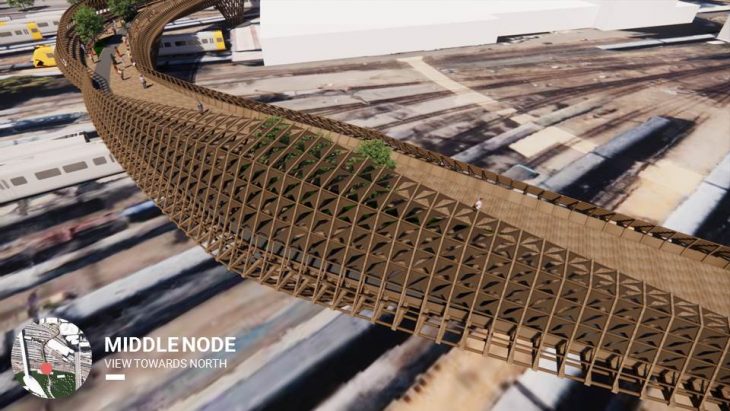
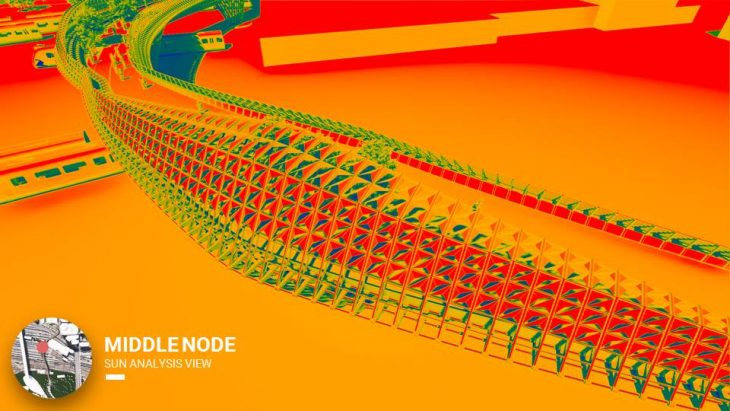
As we’ve been still unhappy with the level of the sun protection we have achieved with the introduction of the shading skin, we decided to plant some trees in the areas where we had supports (for obvious reasons we couldn’t afford doing that in the middle of the span).

